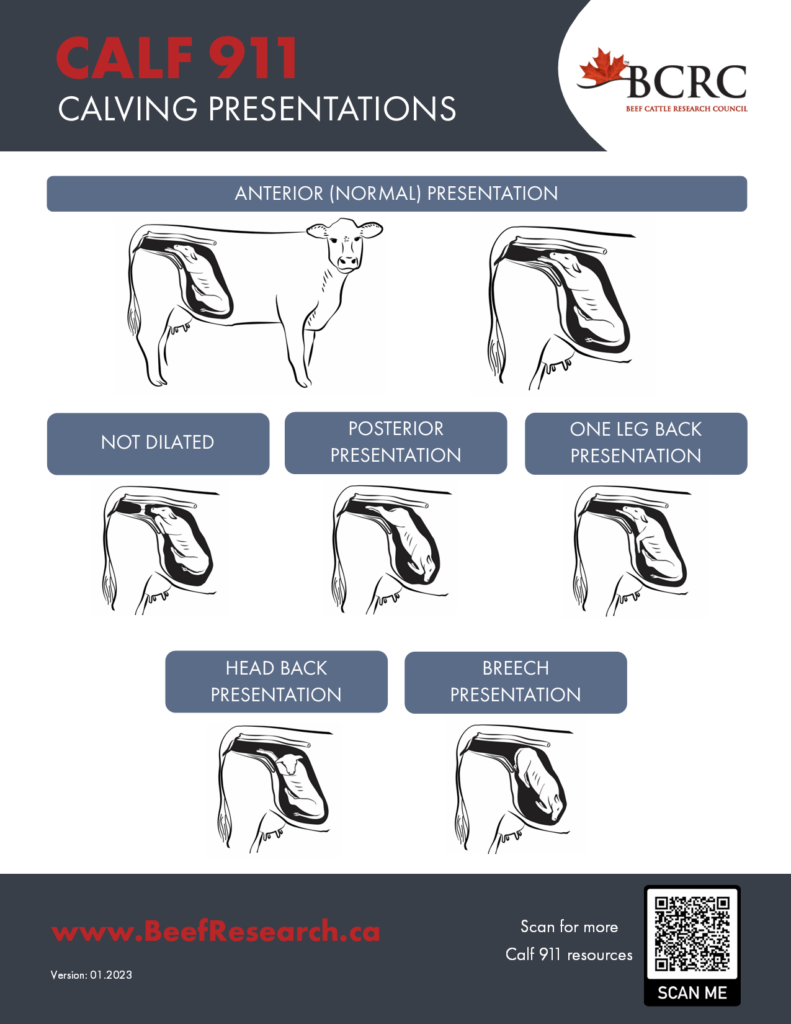Calf 911 – When and How to Assist with a Difficult Birth
Most experienced producers can think of at least one instance when they were baffled by an unusual calving. Twins, backwards calves and other malpresentations can be very confusing and even overwhelming when you are on your own and doing your best to quickly solve a problem calving.
Advances in breeding and genetics, along with management and nutrition, have moved us ahead of the days when pulling calves was commonplace. But as is the case with anything involving a biological process, there are always anomalies and abnormalities.
Findings through the Western Canadian Cow-Calf Surveillance Network reported that the average level of assisted calving within herds was 4.9%. While that number may look small, 90% of producers assisted at least one calf during the previous calving season. Calving difficulties (dystocia) do occur and can have profound impacts on the bottom line.
When and How to Intervene
Intervening at the wrong time during calving can result in unnecessary stress, injury or even death of the cow and/or calf. Producers should be familiar with the normal sequence of calving. Every scenario is different, however once a water bag appears, a calf should hit the ground within one hour for cows or up to one and a half hours for a first-calf heifer.
A calving decision tree was developed in partnership with Manitoba Beef & Forage Initiatives (MBFI). It is a visual tool that can be used to help identify what the process of calving should look and feel like. The flow chart can also assist with step-by-step decision making when calving is not progressing normally. This information can help in making informed decisions and aid in communicating vital information to veterinary staff if veterinary care is required.
The flow chart follows the cow from the first stage of labour when subtle changes in behaviour and physical appearance first begin and progresses through until the calf is born. If signs of distress or abnormal presentations occur, steps for assessment and interventions are presented.
Timelines are also provided so that the cow is not allowed to labour too long, allowing for intervention to be sought out in time for a positive outcome for both the cow and calf. Timely assistance results in a 9% increase in the number of animals cycling at the onset of the breeding season and a 14% increase in the fall pregnancy rate. Furthermore, timely assistance will increase the chance of a live calf if a cow does have dystocia.
When planning for calving season, the calving decision tree is an excellent resource to keep close at hand, in the barn and with your calving supplies. If a cow needs assistance, it is helpful to have easy and quick access to simple and accurate information when and where you need it.
Sharing or reprinting BCRC posts is welcome and encouraged. Please credit the Beef Cattle Research Council, provide the website address, www.BeefResearch.ca, and let us know you have chosen to share the article by emailing us at info@beefresearch.ca.
Your questions, comments and suggestions are welcome. Contact us directly or spark a public discussion by posting your thoughts below.


